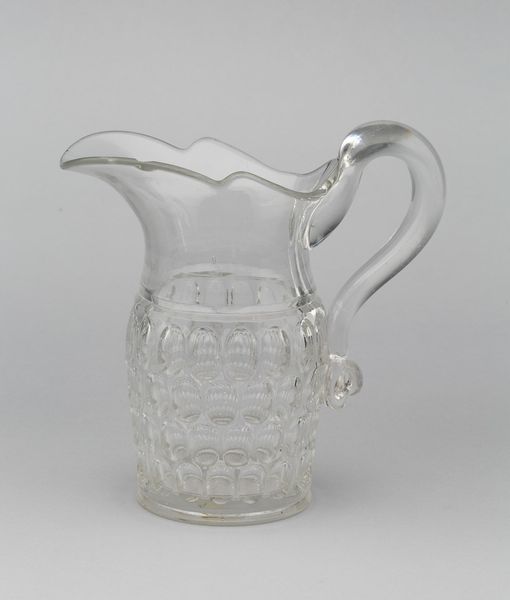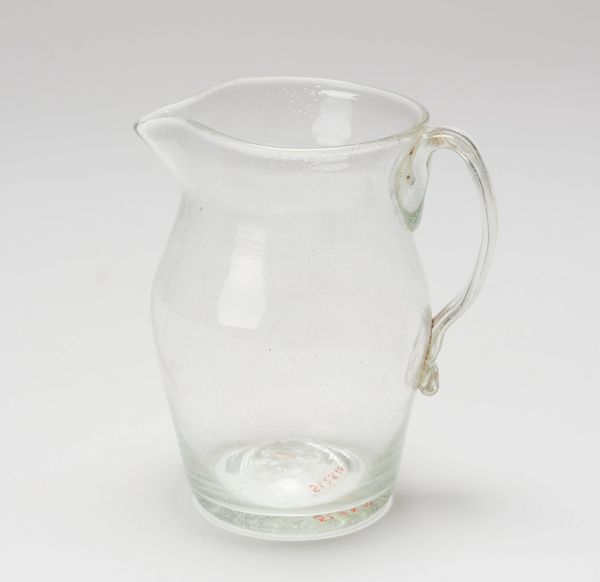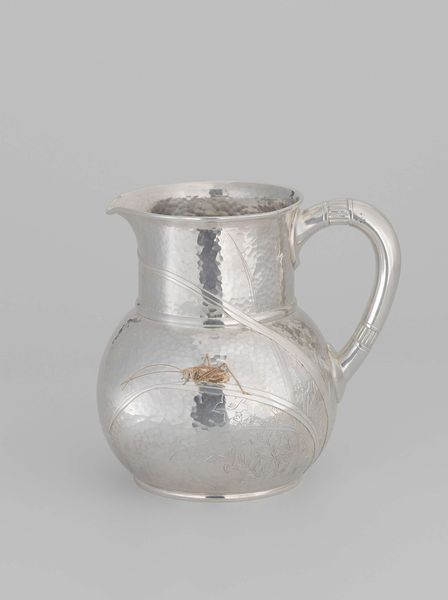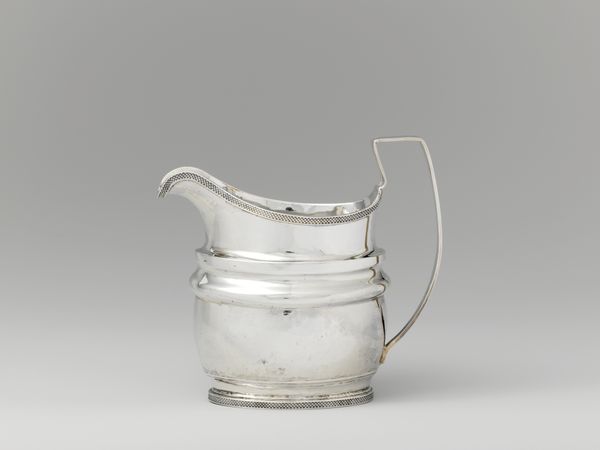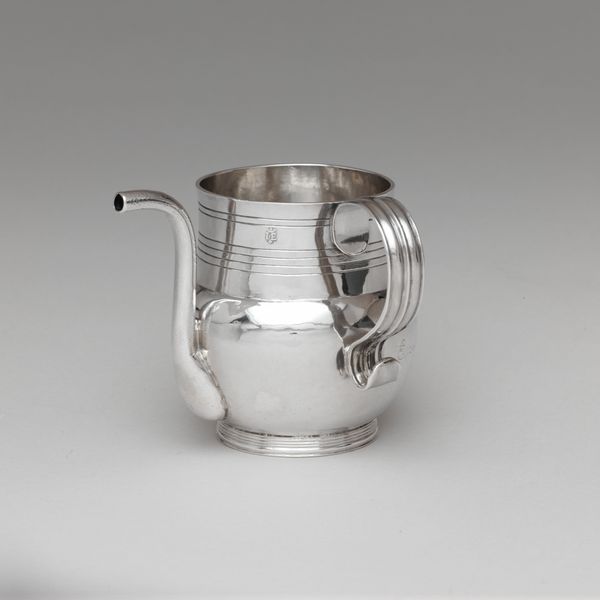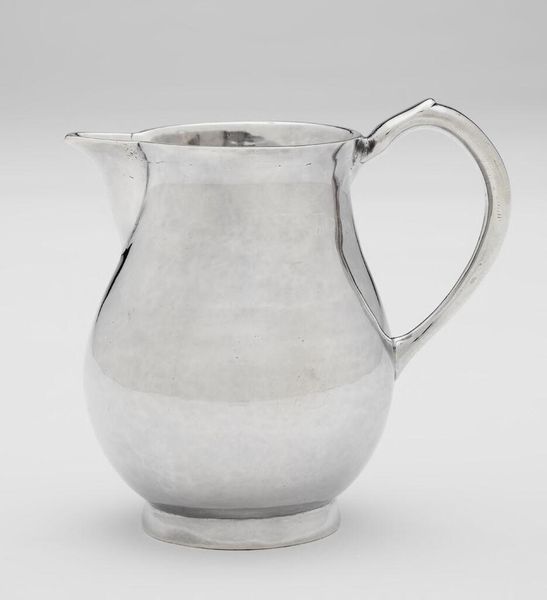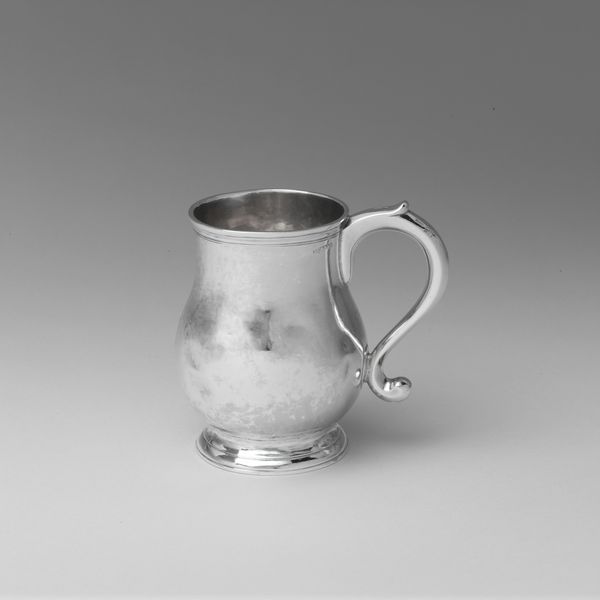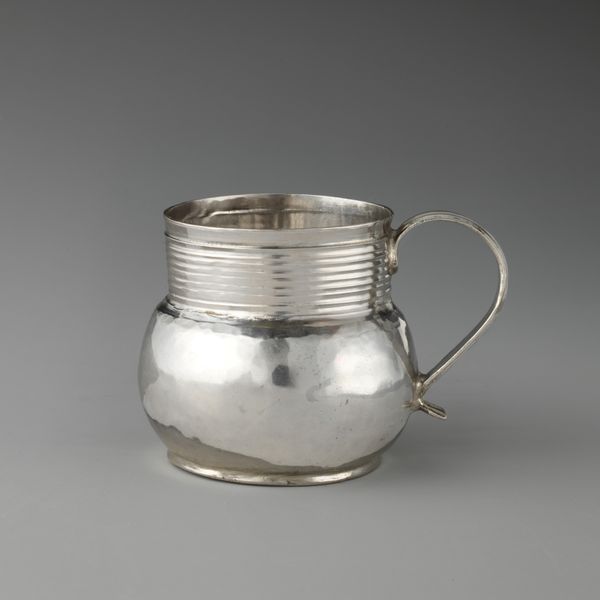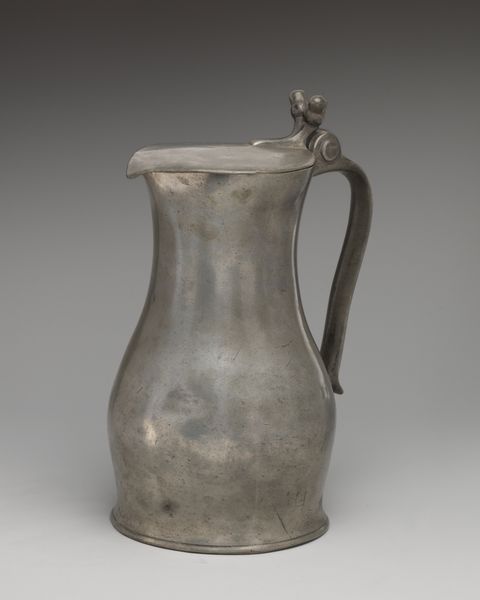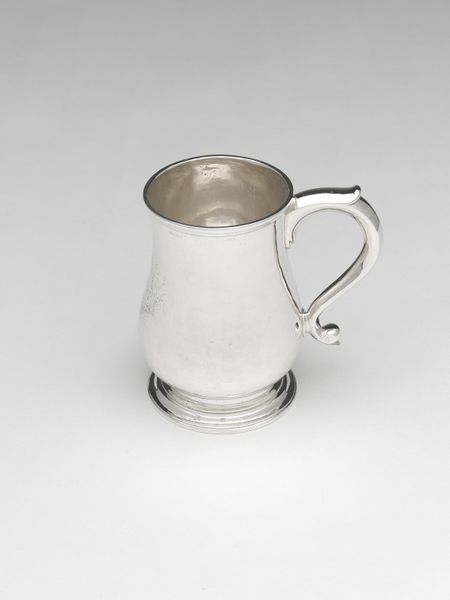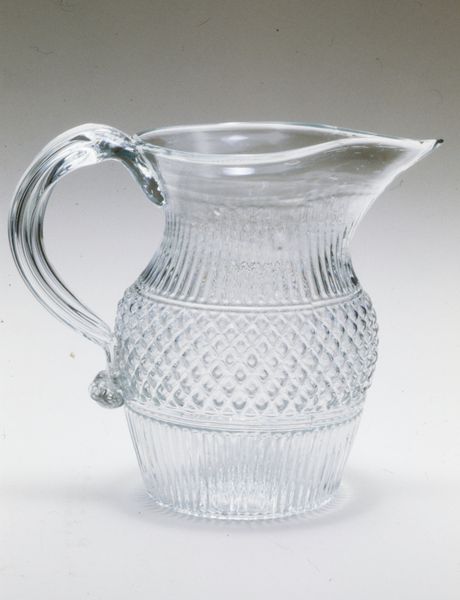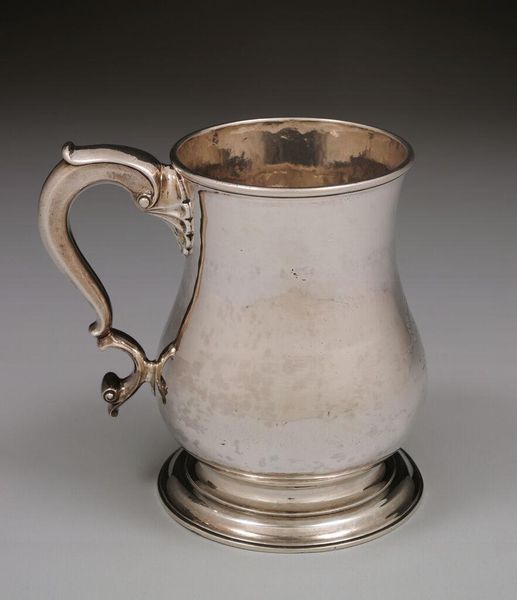
glass
#
glass
#
decorative-art
Dimensions: 10.5 × 10.1 cm (4 1/8 × 3 7/8 in.)
Copyright: Public Domain
Curator: Looking at this little glass cream pitcher, crafted sometime between 1810 and 1840, I'm immediately struck by its utter simplicity. It’s the kind of object that just whispers "early morning" to me, all quiet and soft. Editor: I see that too. There’s something incredibly humble about its form, particularly in light of its potential use. However, I immediately wonder about the role such an object might play, especially if owned by those with the economic privilege to possess decorative-art glassware in the 19th century. How does something seemingly so plain connect with historical themes of status and access? Curator: Absolutely! It's tempting to romanticize, but the truth is more layered. For the folks who could afford it, perhaps it offered a touch of refined simplicity amid fancier tableware. It speaks to me about functionality merging with subtle artistry. There’s something pleasing about its gentle curves, and the light just catches it beautifully. The faint bubbles in the glass almost feel like tiny stars. Editor: And even that glass tells a story, right? Its materiality reflects access to resources and techniques of production, highlighting potential class disparities tied to even seemingly innocuous objects. Who had access to these kinds of luxury materials during that period? Who did the anonymous glass blowing work? Curator: That anonymity also speaks volumes. This piece sits humbly in The Art Institute of Chicago now. I wonder how many hands it has passed through. It's a quiet reminder of those small, daily rituals, transformed through skilled hands. It almost looks like a ghost of a thing, holding echoes. Editor: Exactly, and those echoes reverberate. The beauty is not just in its simplicity, but in confronting the complexities that it inadvertently holds. In thinking about labor, access, and what we choose to elevate, we start seeing these beautiful objects as a entry point for dialogue. Curator: Agreed. Maybe a single, plain vessel can overflow with many meanings, stories that are not so plainly visible until we look deeply and through the right eyes. Editor: Indeed, what we at first see as just a humble cream pitcher can catalyze our understandings about a particular moment in history. I find that truly fascinating.
Comments
No comments
Be the first to comment and join the conversation on the ultimate creative platform.
